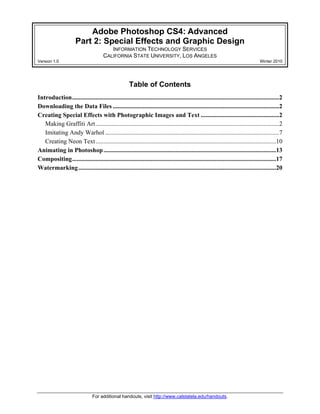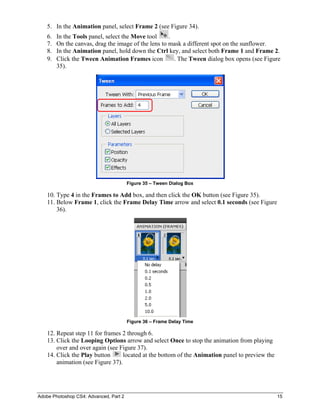The document is a training handout for Adobe Photoshop CS4 focusing on advanced techniques in graphic design and special effects. It covers various projects including creating graffiti art, imitating Andy Warhol's style, adding neon text effects, animating in Photoshop, and digital compositing. Additionally, it provides resources for downloading practice files and step-by-step instructions on executing each project.





















